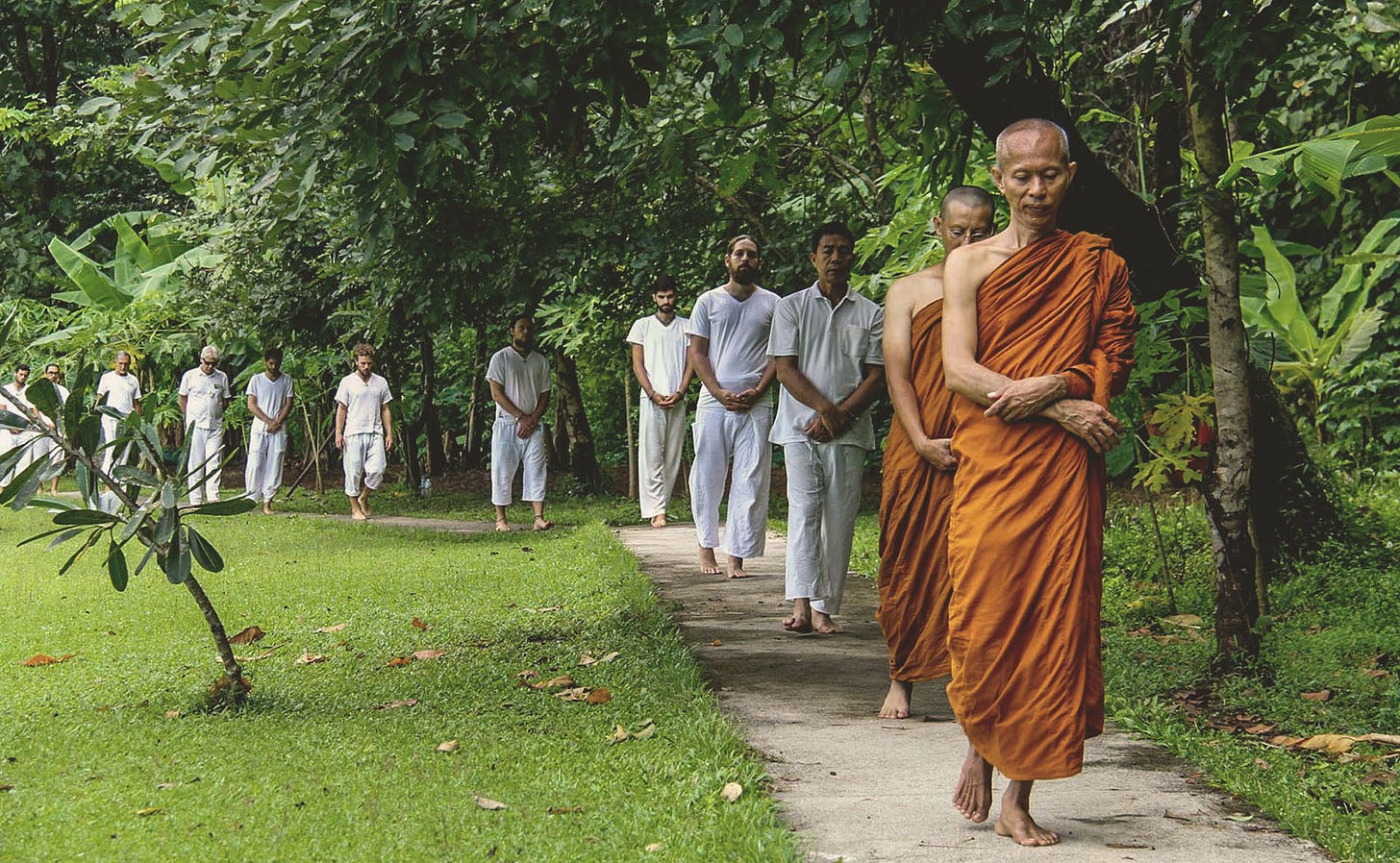When we think of the Buddha meditating, we often picture him seated beneath the Bodhi tree, unmoving and serene. But this image tells only part of the story. In fact, the Buddha regularly alternated between sitting and walking meditation—a rhythm that was not just personal preference but also a practical and deeply insightful approach to mindfulness and concentration.
Let’s take a look at where this is mentioned in the Pāli Canon, and how we can incorporate this practice into our own lives.
Walking Meditation in the Suttas
Walking meditation, or cankama in Pāli, appears in multiple early Buddhist texts. One of the clearest sources is the Cankama Sutta (AN 5.29), where the Buddha outlines five distinct benefits of walking meditation:
“Monks, there are these five benefits of walking up and down (cankama):
One is able to endure long journeys.
One is able to strive (to put forth effort).
One has little disease.
What is eaten, drunk, chewed, and tasted is properly digested.
The concentration that is gained from walking up and down is long-lasting.”
It’s clear from this that walking meditation wasn’t just a warm-up. It was a deep practice in its own right, helping to sustain both the body and the mind.
Cankama (Pāli: caṅkama; Sanskrit: caṅkramaṇa) literally means “walking back and forth” or “pacing”. It comes from the root kam meaning “to walk” or “to go,” with the prefix caṅ- suggesting repetition or movement to and fro.
The Buddha Alternated Sitting and Walking
Several suttas give us glimpses of the Buddha's daily rhythm of practice. In MN 140 (Dhātuvibhaṅga Sutta), we read that after sitting cross-legged in meditation, the Buddha would get up and walk back and forth on a path. This was such a common activity that walking paths (cankama paths) were standard parts of monastic life.
In SN 47.6, we see that mindfulness is to be developed while walking, standing, sitting, and lying down—but walking and sitting are the most emphasized.
And in MN 4 (Bhayabherava Sutta), the Buddha describes his early striving in the forest:
“Whether I was walking, standing, sitting, or lying down, I had no fear.”
That is: mindfulness and equanimity pervaded every posture—but again, walking and sitting are at the heart of formal practice.
How Long Did the Buddha Sit and Walk?
Keep reading with a 7-day free trial
Subscribe to The Gentle Law to keep reading this post and get 7 days of free access to the full post archives.





